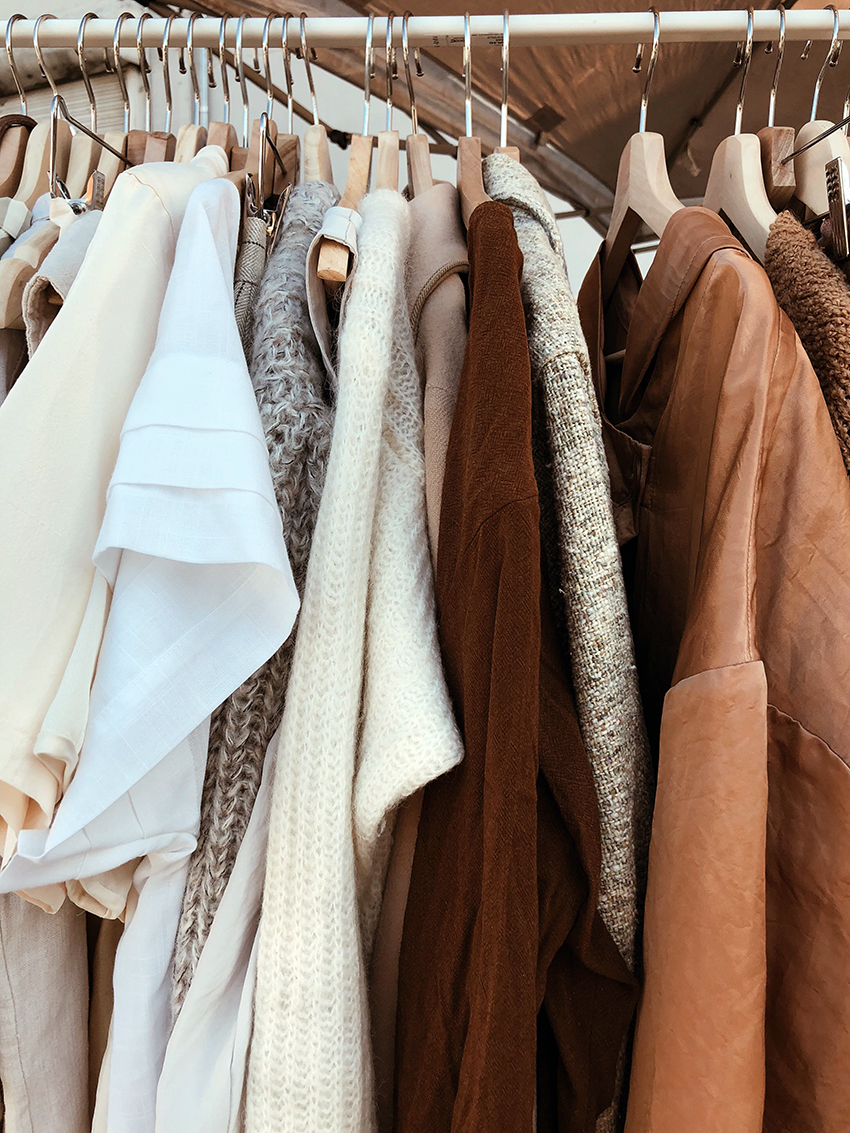When you hear people talk ethical fashion or conscious consumerism, it’s easy to assume they have it all figured out. But the truth is, there’s no rule that defines what it means to be an ethical shopper. Yes, there are clear boundaries—cheap clothing made of synthetic material produced in sweatshop, that’s pretty obvious—but for the most part you just have to keep learning and making decisions as learn more about how to shop ethically. If you think of ethical shopping as a whole, it’s very overwhelming, but there are plenty of small steps you can take for direction, and those will lead to big changes. Here’s 5:

5 small steps to help you shop ethically
Research your favorite brands
Start with where you are now, by looking into some of your recent purchases. What can you find out about the materials? (Once you find out what they are, get Googling!). What does each brand you already love say about sustainability or ethical manufacturing on their own websites? Can you detect any areas of possible greenwashing? Honestly, listening to what my gut tells me when I read marketing language and product descriptions is a huge help. Discerning customers can tell when something isn’t up to their moral code.
Search for ethical clothing in the major stores
Counterintuitive, I know. But when you’re used to shopping at department stores like Nordstrom & Macy’s, it’s hard to find everything you once found there elsewhere. While pretty much everyone is throwing around the word “need” these days, there will be a few times when you indeed do need a new article of clothing. There are times when you have an important work event, or times you need a new bra and don’t have $100 to spend on one you can guarantee is ethically made from sustainable materials, and you just aren’t the one who lucked out at Goodwill. These are the times that knowing the most ethical brands in mainstream stores will come in handy. It may not get you all the way there, but it IS a step, which is important. I started off by searching “made in USA” at Nordstrom and then Googling individual brands (not to say it has to be made in USA to be sweatshop-free—definitely not—but it makes tracking a little easier when in a pinch). Department stores do sell a small % of ethical brands, they’re just not actively seeking them. But you can actively seek them!
Don’t buy online just because it’s convenient
Cut down on waste and resources by leaving online purchases to items you can’t get by shopping in-person. If you can pick up the item next time you’re running errands, it doesn’t need to be purchased online. Plus, this helps you be more mindful about what you’re purchasing… We all know how easy it is to fill up a virtual shopping cart when we would be much more discerning in store.
Be a better thrift shopper
Not everyone is super comfortable shopping secondhand from the beginning. It can be a tedious task, especially if you haven’t spent a lot of time in thrift stores and consignment shops. Learn how to be more efficient and mindful when shopping secondhand with these four tips and you will be on your way to a more ethical home.
Go down the Instagram rabbit hole
If you are like me and tend to get exhausted by all the noise of Instagram, I recommend setting a timer and only spending more than a few minutes on this when you’re feeling really inspired. If you can wade through the clutter long enough to find hashtags you really enjoy and accounts that lift you up, educate, and inspire rather than make you feel overwhelmed or inadequate, you can really learn a lot there. Check out some of the hashtags we’re following on our own account, or that we leave in the comments, and use them to bounce around and find your own favorite ethical shopping resources!
Want more tips on how to shop ethically? See what to do with a closet full of non-ethical stuff, and learn how to create a sustainable fashion budget here.
your two cents